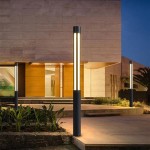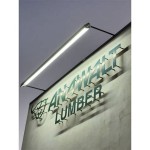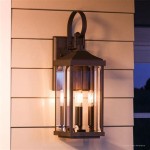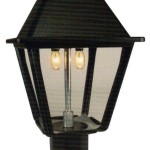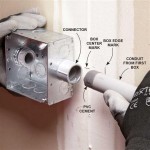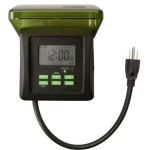How Do I Set My Noma Outdoor Timer?
Noma outdoor timers provide a convenient way to automate outdoor lighting and decorations. Properly setting the timer ensures that lights turn on and off at the desired times, saving energy and enhancing security. This article provides a comprehensive guide to setting various Noma outdoor timer models.
Understanding Your Noma Timer
Before beginning the setup process, it is essential to identify the specific model of your Noma timer. Different models may have slightly varied button layouts and programming procedures. Locate the model number, usually printed on the back or bottom of the timer. Refer to the user manual specific to your model for detailed instructions. While this article provides general guidance, consulting the manual will ensure accurate setup for your particular timer.
Basic Setup Procedures
Most Noma outdoor timers follow a similar basic setup process. This typically involves setting the current time, programming the on/off times, and selecting the desired operating mode. The following steps outline a general approach:
1. Powering the Timer: Plug the timer into a grounded outdoor outlet. Ensure the outlet is GFCI protected for safety. Then, plug the desired device, such as string lights or a holiday inflatable, into the timer's outlet.
2. Setting the Current Time: Locate the "Clock," "Time," or "Set" button. Press and hold this button until the display begins to flash. Use the "Hour," "Minute," and "Week" buttons (if applicable) to adjust the time to the current time. Some models may use up and down arrows for adjustment.
3. Programming On/Off Times: Press the "Timer" or "Program" button. The display will show "ON 1" or a similar indicator. Use the "Hour" and "Minute" buttons to set the desired on time for the first program. Press the "Timer" or "Program" button again to set the off time for the first program. Repeat this process for additional programs if desired. Most Noma timers allow for multiple on/off cycles per day.
4. Selecting the Operating Mode: Choose the desired operating mode, such as "Auto," "On," "Off," or "Random." "Auto" mode activates the programmed on/off times. "On" keeps the connected device powered continuously. "Off" disables the timer, and "Random" simulates occupancy for security purposes.
Utilizing Different Timer Modes
Noma timers often feature specialized modes for different applications. Understanding these modes allows for more precise control and customization.
Daylight Saving Time (DST)
Many Noma timers have a DST switch or button. Activating this feature automatically adjusts the timer's clock forward or backward one hour during daylight saving time changes. This ensures the programmed on/off times remain accurate throughout the year.
Random Mode for Security
The "Random" mode, if available, is designed to enhance security while away from home. It randomly turns the connected lights on and off within a specified timeframe, creating the illusion of occupancy and potentially deterring intruders.
Manual Override
Most Noma timers have a manual override function. This allows you to turn the connected device on or off temporarily without affecting the programmed schedule. The override button is usually labeled "Manual" or "Override."
Troubleshooting Common Issues
Occasionally, users may encounter issues with their Noma timers. Some common problems and solutions include:
1. Timer Not Turning On/Off: Double-check that the timer is plugged into a working outlet and the connected device is functioning correctly. Verify the programmed on/off times and the operating mode. Ensure the timer's circuit breaker hasn't tripped.
2. Incorrect Time Display: Ensure the current time is set accurately, including AM/PM. Check the DST setting if applicable.
3. Timer Resetting: A power outage can sometimes reset the timer's settings. If this occurs, reprogram the timer following the basic setup procedures.
Utilizing Advanced Features
Some Noma timer models incorporate advanced features such as countdown timers, multiple program settings, and even astronomic timers that automatically adjust to sunrise and sunset. Refer to your specific model's user manual to learn how to utilize these features effectively.
Maintaining Your Noma Timer
Proper maintenance can extend the lifespan of your Noma timer. Keep the timer dry and protected from the elements. Regularly inspect the timer and cord for damage. If the timer is exposed to rain or snow, unplug it and allow it to dry thoroughly before using it again.

How To Setup Noma Timer

How To Program Noma Engine Block Outdoor Timer

How To Program Noma Engine Block Outdoor Timer

Noma Mechanical Daily Photocell Timer With Countdown Indoor Outdoor Unboxing

How To Use The Woods Noma Digital Outdoor Timer

Noma Blockheatertimer

Noma Outdoor One On Photocell Timer Instructions

Instructions On How To Program A Simple Noma Stanley Outdoor Timer

How To Setup Noma Timer

Mc404 Noma Outdoor Heavy Duty 24 Setting Timer 1 Partsource
Related Posts

